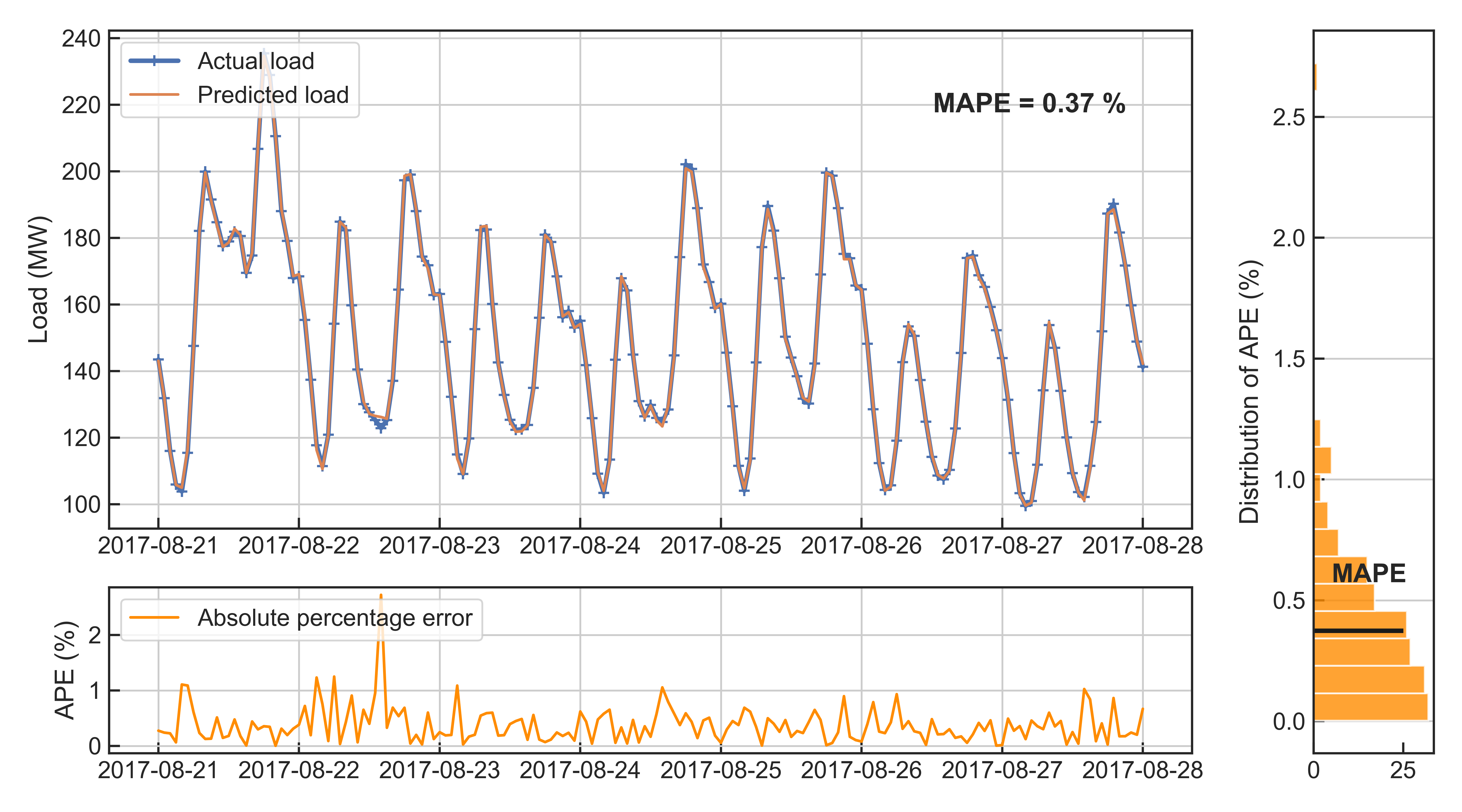Ausgrid Substation Data Ausgrid, “Distribution zone substation information data to share,” http://www.ausgrid.com.au/Common/About-us/Corporate-information/Data-to-share/DistZone-subs.aspx#.WYD6KenauUl, accessed May, 2019.
DarkSky API Weather data from https://darksky.net/dev
Abstract Substation level (132/11 kV) electric power load time-series data from the Ausgrid provider is studied, in combination with a local weather data gathered by means of using a DarkSky API.
Stacking ensemble notebook A machine learning ensemble is built (i.e. stacked ensemble) of several base models, in order to forecast substation hourly load for a weeks time, with the use of weather information (i.e. short-term load forecasting). Some of the base models are also ensembles themselves (Boosting ensembles, Forest of trees, etc.), which are stacked using the ElasticNet linear regression, and a weighted average, as a second-stage models. Training data set is used for training the base models, where optimal base model's hyper-parameters are determined by the grid search with time-series cross-validation on the training set. Bayesian optimization is used for fine-tunning the model's hyper-parameters, in case of the Support Vector Regression model. Validation set is used only for training the second-stage models, which stack the base models into an ensemble. Stacking is carried-out using penalized linear regression. Again, grid search with time-series cross-validation is used on the validation set to fine-tune the ensemble. The final set of base models, along with the second-stage model (i.e. stacked ensemble), that have been fine-tuned and freezed, are once more re-trained on the entire data set (training + validation sets). The base models and ensemble are then tested using the (never seen before) test set.
This Jupyter Notebook can be seen rendered using the nbviewer here. This notebook serves as a partial code base for the following research paper, which provides explanations and visual guides for the stacking ensemble building process.
Deep neural networks notebook Several different deep neural networks are presented for the hour-ahead load forecasting with the use of weather information (i.e. short-term load forecasting). Presented are (1) convolutional deep neural networks with GRU layers, (2) feed-forward deep neural network and (3) wide and deep feed-forward neural network. Network architectures are fixed in advance. This Jupyter Notebook can be seen rendered using the nbviewer here.
